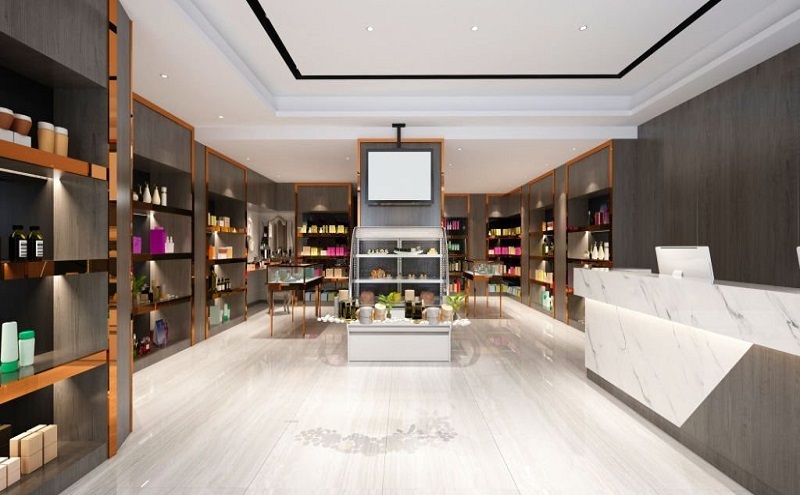Color Psychology in Retail Design: Making Informed Choices
In the competitive world of shopping, the way a store appears and feels can considerably affect its performance. A well-executed retail fit-out is vital for creating an environment that not only attracts customers but also enhances their buying experience. Comprehending the basics of color psychology can be a deciding factor in this arena, affecting everything from customer emotion to buying behavior. As retailers aim to make their mark, choosing the right colors and materials becomes an essential part of the design process.

The following article will examine the various elements that contribute to effective retail fit-outs, leading you through the importance of thoughtful design, from concept to execution. We will address how a engaging store layout, strategic use of lighting, and thoughtful color selection can not only boost your brand but also propel sales and encourage customer engagement. If you are preparing for a full renovation or simply looking to update your space, our holistic approach will ensure you take informed decisions that serve your business in the end.
Understanding Retail Fit-Outs
A commercial fit-out refers to the procedure of designing and furnishing a commercial space to make certain it satisfies the operational and visual needs of a firm. This comprises everything from the design of the shop to the pick of decor, equipment, and color schemes. The aim is to create an environment that boosts the shopping experience and fits with the business's identity. By intentionally planning each aspect of the fit-out, businesses can encourage customer engagement and encourage purchases.
The value of a commercial fit-out cannot be overstated. It not only impacts the overall customer experience but also has a significant role in branding and marketing. A well-executed fit-out can create a memorable first experience, making it important for companies aiming to stand out in a crowded market. Additionally, a skilled fit-out can enhance space and increase operational efficiency, leading to higher sales and customer satisfaction.
In recent years, retail fit-out movements have changed, placing more importance on eco-friendliness and technology integration. From sustainable materials to advanced tech options, modern fit-outs are designed with the future in mind. As retailers adapt to shifting consumer preferences, grasping the nuances of commercial fit-outs becomes crucial for prosperity. By employing creative design strategies, businesses can create spaces that merely attract customers but also react to the constantly evolving retail landscape. ### Designing for Success
A carefully crafted commercial space establishes the groundwork for a thriving retail atmosphere. Success is anchored in understanding the wants and needs of shoppers while designing the area. This involves designing an area that promotes exploration and interaction, implementing thoughtful arrangements of merchandise, and ensuring unobstructed pathways. By analyzing shoppers' engagements with items, retailers can develop an area that optimizes convenience and facilitates consumer purchases.
Color psychology is essential in retail design, influencing the feelings of shoppers. Choosing the best colors can evoke feelings ranging from excitement to calmness, effectively affecting how customers perceive the brand and their shopping experience. For instance, warm colors like red and orange can encourage quick buying decisions, while calm tones like navy and jade can create a sense of trust and relaxation. By selecting colors that reflect the brand's persona and shopper desires, retailers can create an inviting atmosphere that enhances customer satisfaction.
Moreover, integrating branding into the retail design is essential for establishing a seamless retail narrative. This includes the use of logos, thematic elements, and color schemes that reflect the principles and goals of the brand. A unique and consistent branding approach not only strengthens brand awareness but also fosters customer loyalty. By ensuring that every element of the store, from visual displays to signage, aligns with the overall brand image, retailers can build a meaningful relationship with their shoppers and inspire return trips.
Budgeting and Eco-Friendliness
Budgeting for a retail fit-out can be difficult, especially when aiming to include eco-friendly practices. https://refurbishmentsuk.co.uk/best-retail-fit-out/ to start by determining your total budget and allocating funds for sustainable materials and practices. While initial costs for eco-friendly options may be higher, they often lead to long-term savings through lowered energy consumption and decreased maintenance costs. Prioritizing sustainability can improve your brand's reputation and appeal to eco-aware consumers, making it a worthwhile investment.
To keep costs under control, consider choosing local suppliers for eco-friendly materials to lower transportation expenses and environmental impact. Additionally, integrating smart technology can optimize energy usage, which can further lower operational costs. Evaluating various funding opportunities, such as green loans or grants for sustainable initiatives, can also alleviate budget constraints and provide monetary assistance for eco-friendly improvements in your store.
Finally, setting a clear vision for sustainability within your fit-out can help guide your choices throughout the process. Regularly revisiting your budget, ensuring you stay on track while allowing for innovative and sustainable practices, can lead to a successful fit-out that not only meets your financial goals but also aligns with a commitment to sustainability. This approach will resonate with clients and build trust, making your business more robust in a challenging market.